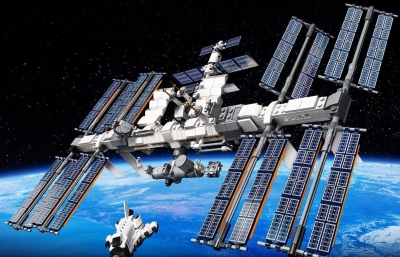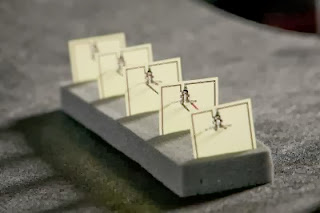 There’s a lot going on in the news at the moment. The one-year-overdue Olympics are taking place in Tokyo and receive wall-to-wall press coverage. When the news isn’t about the Olympics, it’s either about the ongoing pandemic or the latest hot story in politics. Because of that, you might not have heard about a recent near-disaster aboard the International Space Station.
There’s a lot going on in the news at the moment. The one-year-overdue Olympics are taking place in Tokyo and receive wall-to-wall press coverage. When the news isn’t about the Olympics, it’s either about the ongoing pandemic or the latest hot story in politics. Because of that, you might not have heard about a recent near-disaster aboard the International Space Station.
ISS suffers near disaster
There was limited reporting about the incident, and what little was written tried to play it off as a minor issue. It’s only in the past few days that we’ve come to understand how severe the problem was. It’s no exaggeration to say that the station was briefly in danger of falling out of the sky, with the loss of everybody on board.
The launch of the International Space Station was a huge deal when it happened and was considered one of the outstanding technological achievements of the late 20th century. Since then, though, we’ve all become a little blasé about it. Most of us routinely forget that it’s in orbit at all. Because of that, it might surprise you to hear that the ISS has now been continuously occupied for more than twenty years.
ISS Technology Is Dated
There are two ways of looking at that fact. The first is to say that it’s outperformed all expectations and is a testament to the genius of the people who put it there. The second is to say that it’s getting old, and as it gets older, it’s likely to become more prone to errors and technological issues. Nobody knows how long it will last, but it certainly won’t remain in orbit for another twenty years. Officially speaking, there are no plans to extend its service beyond 2024. That’s only three years away, and this most recent issue might be a good reason to consider bringing that date forward.
The Nauka Space Module Incident
Here’s what happened for those of you who haven’t yet come across the story. A little over a week ago, the Russian space module Nauka docked at the International Space Station. When it docked, its thrusters should have powered down immediately. That didn’t happen. Instead, the thrusters continued to fire and sent the station into a spin.
At the same time, it nudged the ISS off its standard orbital trajectory. NASA confirmed the incident immediately but tried to play it down. Their first statement to the press said that the ISS was never taken beyond 45 degrees out of attitude, and there was no risk to the lives of anybody aboard. That seems to have been a panicked attempt at a cover-up. On August 3rd, NASA flight director Zebulon Scoville made comments that contradict the organisation’s prior position.
According to Scoville, the effect of the Russian module’s propulsion was so pronounced that the ISS performed a complete flip and then went beyond that, experiencing 540 degrees of revolution in the process. By the time the thrusters shut off, the station was upside-down relative to its usual position and had to be manually flipped once more to get it back into the correct position.
Emergency Declared
As the station span, Scoville declared a “spacecraft emergency.” This is the first time such an emergency state has been declared in the station’s long history and reflects the panic that was happening at mission control as the incident unfolded.
Various press agencies have gone back to NASA to clarify their original statement in the light of Scoville’s comments and received a blanket response. While not explicitly confirming or denying Scoville’s description of the emergency, they accept that the numbers he gave regarding rotation and change in attitude are correct.
At the same time, they stress that the rotation was so slow that it was imperceptible to the crew aboard it. They also say that there was no system failure aboard the ISS during the incident. Not everybody is satisfied by that explanation. The ISS has thrusters of its own which it can use for course correction as and when required, such as dodging space debris or counteracting gravitational fade.
Software failure?
Those thrusters should immediately have compensated for the effect of the Russian module. Those thrusters either weren’t deployed or failed to resolve the problem for reasons that are yet to be disclosed. The Russians say that a software failure caused the module’s thruster problem, but that’s incidental. The point is that the ISS should have been able to deal with it but, for one fleeting and terrifying moment, couldn’t.
Further details emerged later in the day on August 3rd. It’s now claimed that the station was thrown out of its usual orientation altogether and that ground control lost contact with the crew for extended periods twice before the problem was resolved. Rather than being a quick fix, the ISS was out of alignment for a full hour. It’s possible – perhaps even likely – that there are still things about the incident that we aren’t being told.
Even if we assume that the station’s thrusters were fired to counteract the module’s thrusters, that would place untold stress on the station’s superstructure. It’s almost inevitable that damage has been caused, and the extent of that damage might determine whether or not the current crew will be the last ever to go there.
It’s a gamble that’s lasted 20 years
Keeping a space station in orbit for twenty years isn’t easy. The mathematics involved in doing so are incomprehensible to the average person. When you consider that there are millions of calculations carried out in a microsecond when someone hits the spin button on something as simple as an online slots game, you get a sense of the almost infinite complexity of astrophysics.
Maybe there’s a metaphor to reach for there. Online slots are all about the thrill of the unknown and the sense that anything could happen at any moment. For the millions of people who enjoy playing, the sense of having no control over the outcome is all part of the thrill. We suspect that the astronauts aboard the ISS felt considerably less thrilled than the average online slots player when they realized the full horror of their dice with death. There was no jackpot waiting for them.
It’s an awe-inspiring accomplishment to keep a human-made structure in orbit around the Earth for twenty years, but knowing when to let go is just as important as getting there in the first place. Wonderful things have been achieved aboard the ISS. Now might be the right time to let it go. The next incident might not have such a happy ending.
Shift Frequency © 2021 – How Bad Was The
Recent Incident Aboard the ISS?

